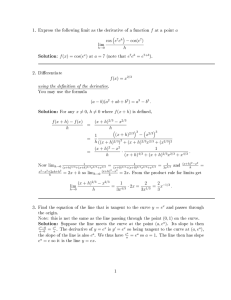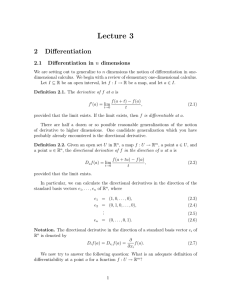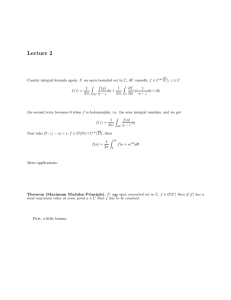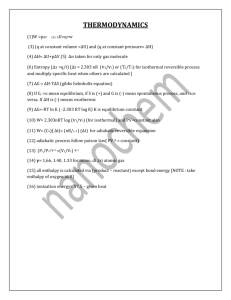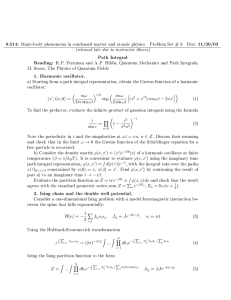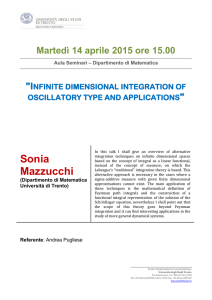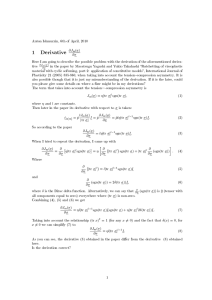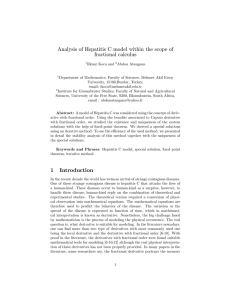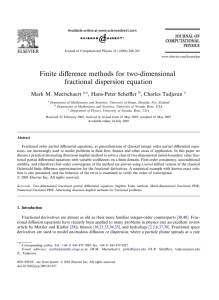Leibnitz’ Rule
advertisement
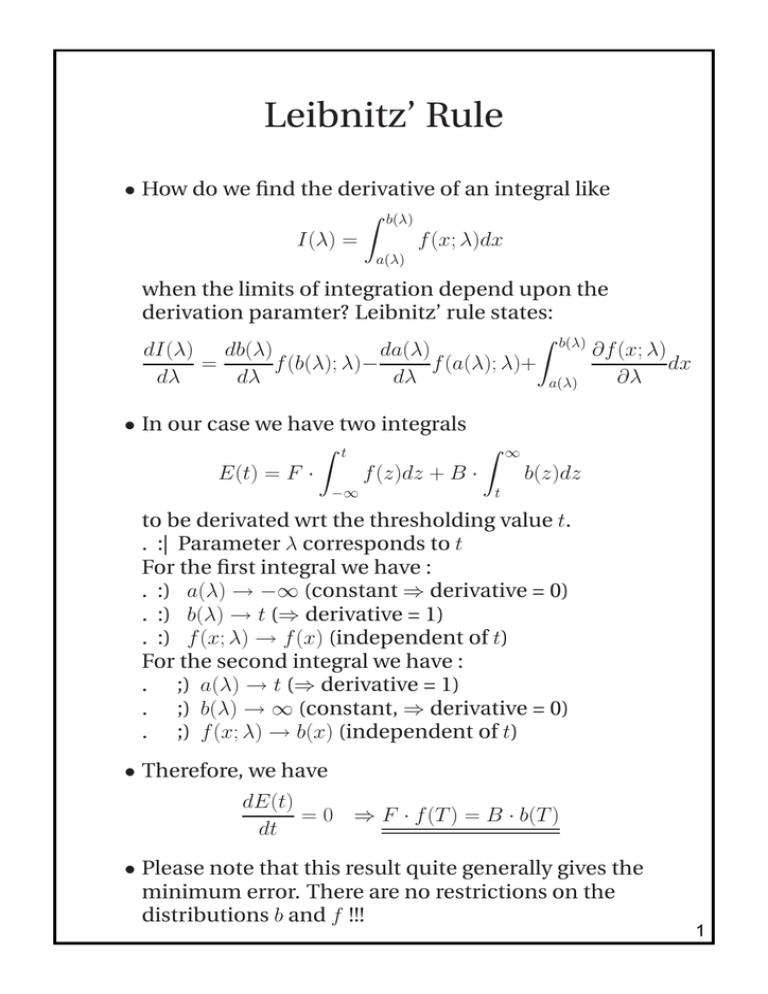
Leibnitz’ Rule • How do we find the derivative of an integral like Z b(λ) f (x; λ)dx I(λ) = a(λ) when the limits of integration depend upon the derivation paramter? Leibnitz’ rule states: Z b(λ) dI(λ) db(λ) ∂f (x; λ) da(λ) = f (b(λ); λ)− f (a(λ); λ)+ dx dλ dλ dλ ∂λ a(λ) • In our case we have two integrals Z Z t f (z)dz + B · E(t) = F · −∞ ∞ b(z)dz t to be derivated wrt the thresholding value t. . :| Parameter λ corresponds to t For the first integral we have : . :) a(λ) → −∞ (constant ⇒ derivative = 0) . :) b(λ) → t (⇒ derivative = 1) . :) f (x; λ) → f (x) (independent of t) For the second integral we have : . ;) a(λ) → t (⇒ derivative = 1) . ;) b(λ) → ∞ (constant, ⇒ derivative = 0) . ;) f (x; λ) → b(x) (independent of t) • Therefore, we have dE(t) = 0 ⇒ F · f (T ) = B · b(T ) dt • Please note that this result quite generally gives the minimum error. There are no restrictions on the distributions b and f !!! 1
